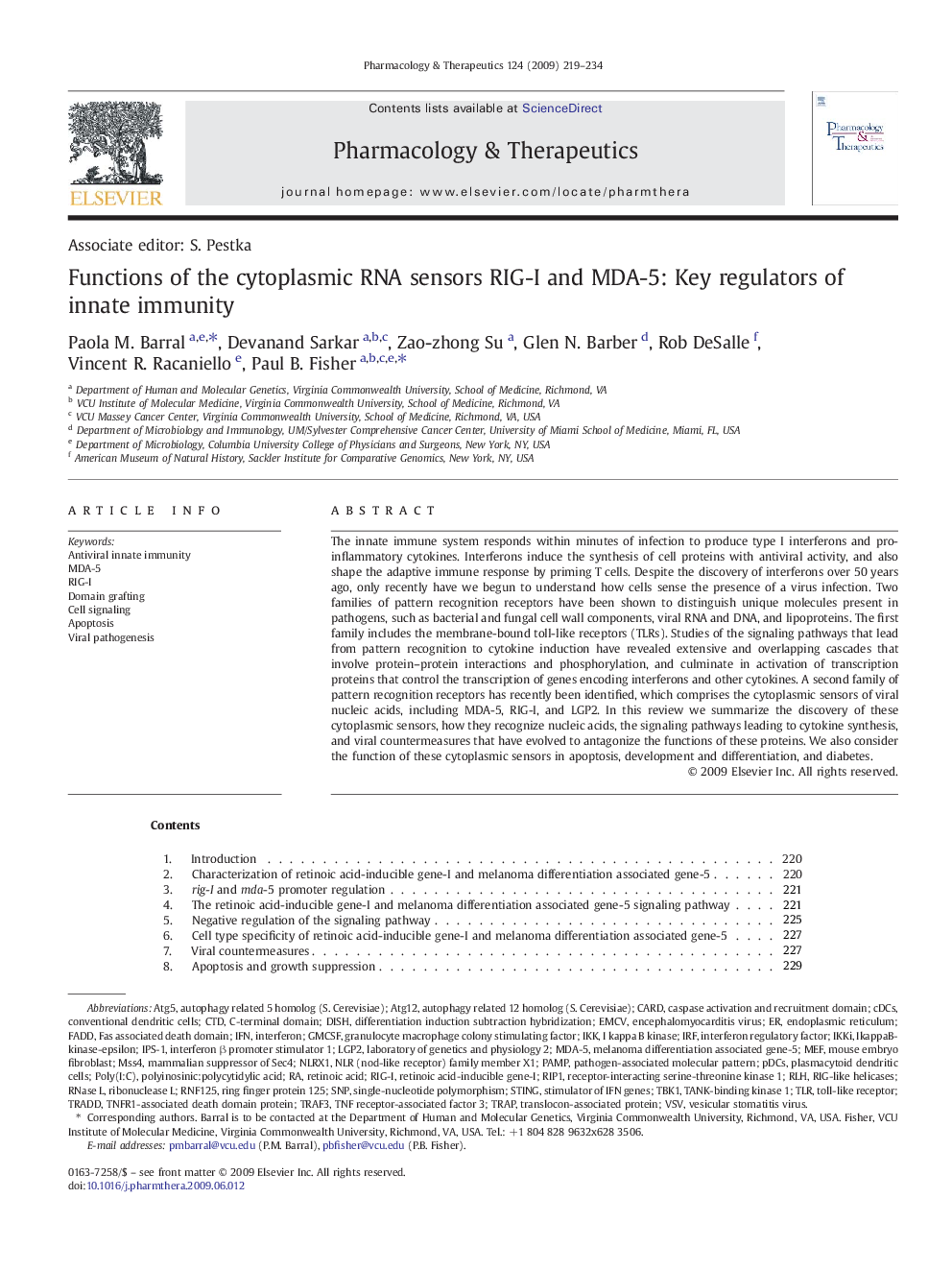| Article ID | Journal | Published Year | Pages | File Type |
|---|---|---|---|---|
| 2563954 | Pharmacology & Therapeutics | 2009 | 16 Pages |
The innate immune system responds within minutes of infection to produce type I interferons and pro-inflammatory cytokines. Interferons induce the synthesis of cell proteins with antiviral activity, and also shape the adaptive immune response by priming T cells. Despite the discovery of interferons over 50 years ago, only recently have we begun to understand how cells sense the presence of a virus infection. Two families of pattern recognition receptors have been shown to distinguish unique molecules present in pathogens, such as bacterial and fungal cell wall components, viral RNA and DNA, and lipoproteins. The first family includes the membrane-bound toll-like receptors (TLRs). Studies of the signaling pathways that lead from pattern recognition to cytokine induction have revealed extensive and overlapping cascades that involve protein–protein interactions and phosphorylation, and culminate in activation of transcription proteins that control the transcription of genes encoding interferons and other cytokines. A second family of pattern recognition receptors has recently been identified, which comprises the cytoplasmic sensors of viral nucleic acids, including MDA-5, RIG-I, and LGP2. In this review we summarize the discovery of these cytoplasmic sensors, how they recognize nucleic acids, the signaling pathways leading to cytokine synthesis, and viral countermeasures that have evolved to antagonize the functions of these proteins. We also consider the function of these cytoplasmic sensors in apoptosis, development and differentiation, and diabetes.
